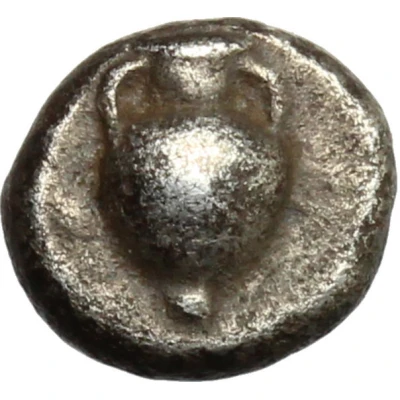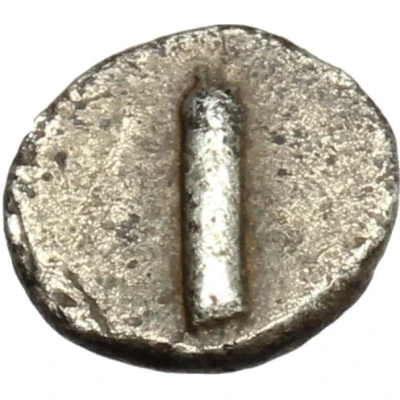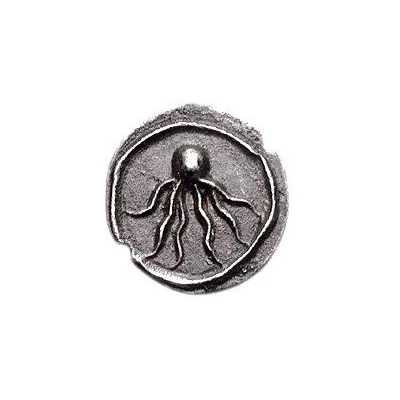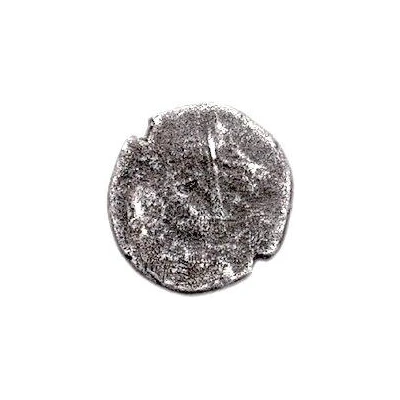


© Artemide Aste
Silver 1 As Amphora series 450 BC - 401 BC
| Silver | 0.66 g | 9 mm |
| Issuer | Populonia (Etruria) |
|---|---|
| Type | Standard circulation coin |
| Years | 450 BC - 401 BC |
| Value | 1 As |
| Currency | As (circa 475-201 BC) |
| Composition | Silver |
| Weight | 0.66 g |
| Diameter | 9 mm |
| Shape | Round (irregular) |
| Technique | Hammered |
| Demonetized | Yes |
| Updated | 2024-10-09 |
| Numista | N#178557 |
|---|---|
| Rarity index | 97% |
Reverse
Value.
Lettering: I
Translation: 1
Edge
Plain
Comment
Only three examples are known, and this type is unpublished.The Amphora / Octopus series coinage were first attributed to Pisae; however, there has been no evidence this type was found in or around that area. The attribution was decided solely based on how the Greek name for octopus sounds similar to the name of the first inhabitants of Pisae (Teuthìs or Teuthòs / Teuta-Teutones). New evidence points to the Amphora / Octopus series fitting in with the coins of Populonia.
There has been much controversy on dating Populonian coins, and as such, the date ranges my vary per source.
The Ampora / Octopus series was struck using Populonia's second silver standard, which is equal to the first silver standard except with the weights of all denomination being halved.
Interesting fact
The Amphora series of coins, which includes the Silver 1 As coin from Populonia (Etruria), is considered to be one of the earliest examples of standardized coinage in the ancient world. The use of a standardized design and weight for coins made it easier for merchants and traders to conduct transactions across different regions, and helped to establish a common currency system throughout the Etruscan civilization.

